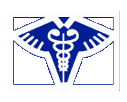WELCOME TO SOMATICS, THE WORLD LEADER IN ECT INNOVATION AND SALES

In 1938 the first patient ever to receive ECT made a full recovery. Now, over 90 years later, ECT remains an established treatment for severe depression. The Thymatron device is an FDA-cleared medical device intended to treat catatonia or a severe major depressive episode associated with major depressive or bipolar disorder in patients age 13 years and older who are treatment-resistant or who require a rapid treatment response (Device class II).
Safety and Efficacy
The Thymatron® instrument's positive safety profile derives from its multiple redundant levels of error protection and operating efficiency.
Several proprietary computer methods in the Thymatron® instrument automatically provide optimal stimulus delivery, seizure quality analysis, and seizure endpoint determination. This information is printed in a concise end-of-treatment report.
Patient Database / Electronic Health Record Software
GPD is a Windows program that is available free of charge to all users of Thymatron ECT devices. It provides a modern workflow: real-time trace monitoring, a patient database, treatment storage and review, and electronic data interfacing to any system that speaks HL7, including Epic, Cerner, Rhapsody, Mirth, and Corepoint.
See the GPD section on the downloads page for more information and links.
Contact Somatics
Phone
847-234-6761
800-642-6761 (USA)
Fax
847-234-6763
Email
[email protected]
Please review indications, warnings, cautions, and adverse effects described fully in Thymatron® System IV - Instruction Manual on the Downloads page of this website. This manual download supersedes and replaces all previous versions, which should be discarded.
This website does not gather or retain any user information.


